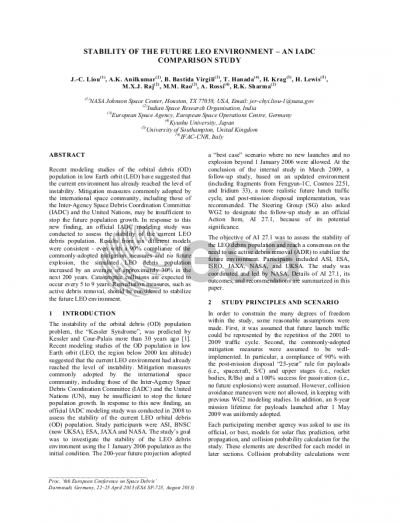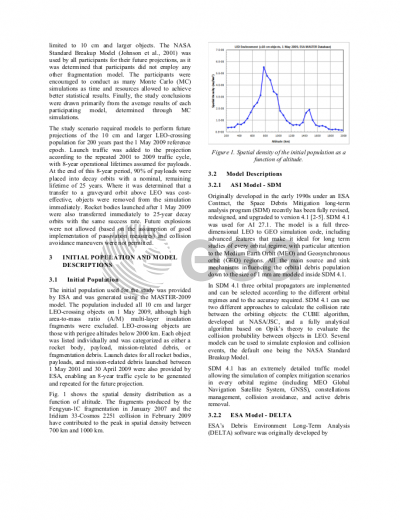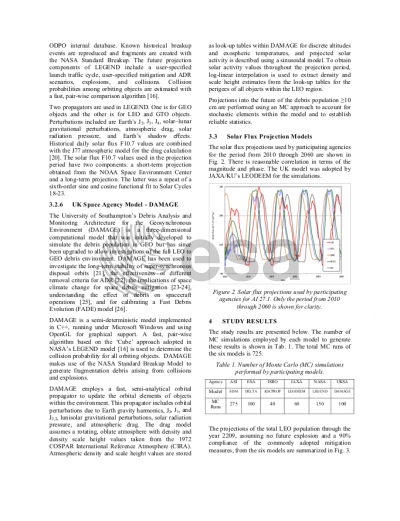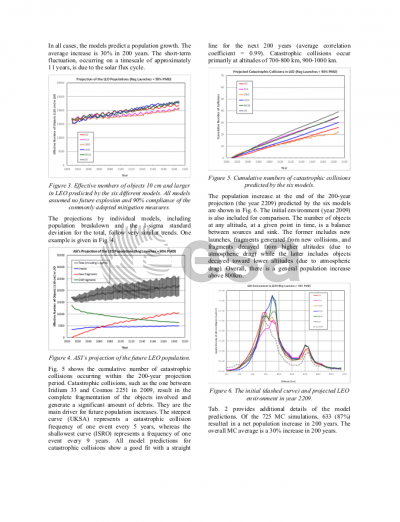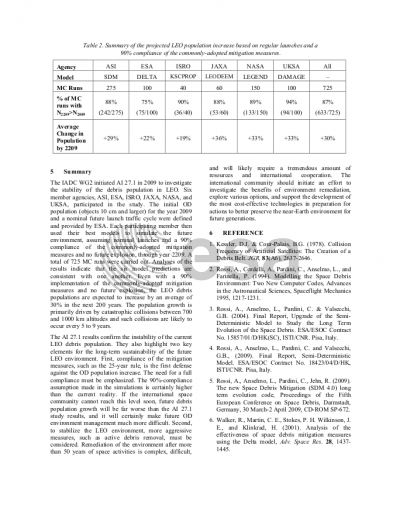Document details

Abstract
Recent modeling studies of the orbital debris (OD) population in low Earth orbit (LEO) have suggested that the current environment has already reached the level ofinstability. Mitigation measures commonly adopted by the international space community, including those of the Inter-Agency Space Debris Coordination Committee (IADC) and the United Nations, may be insufficient to stop the future population growth. In response to this new finding, an official IADC modeling study was conducted to assess the stability of the current LEO debris population. Results from six different models were consistent - even with a 90% compliance of the commonly-adopted mitigation measures and no future explosion, the simulated LEO debris population increased by an average of approximately 30% in the next 200 years. Catastrophic collisions are expected to occur every 5 to 9 years. Remediation measures, such as active debris removal, should be considered to stabilize the future LEO environment.
Preview
